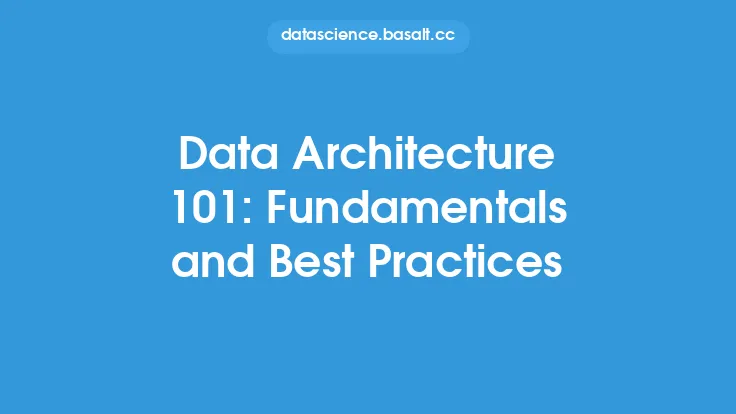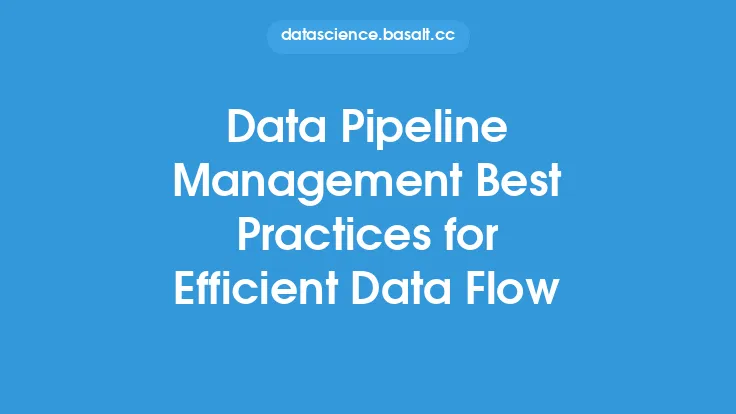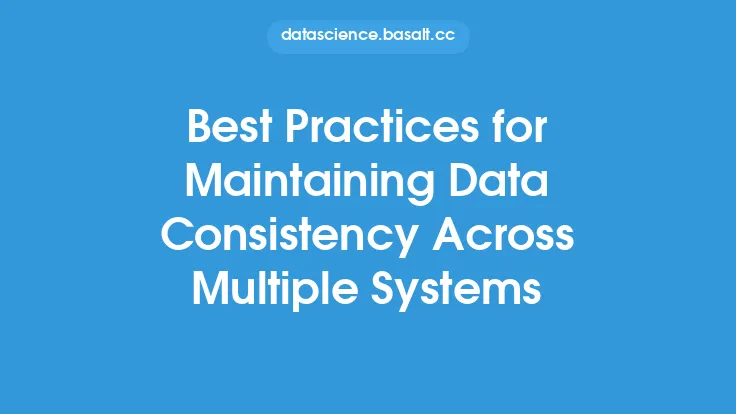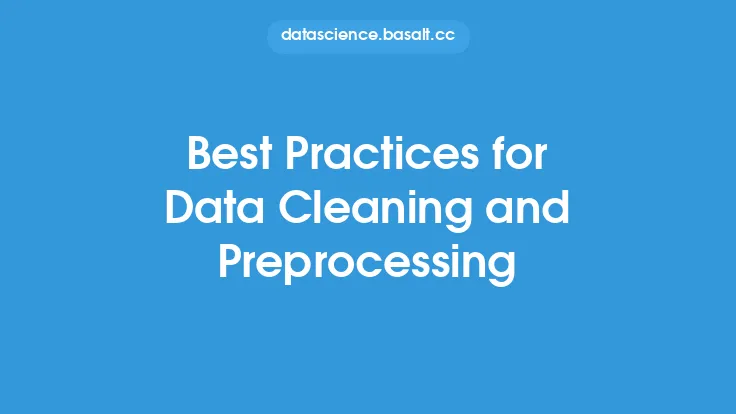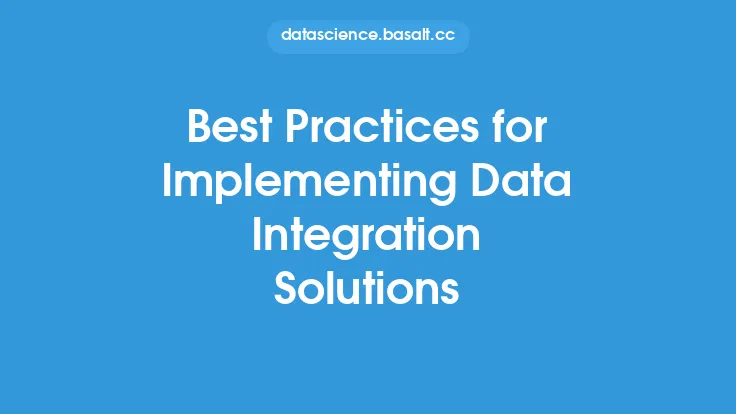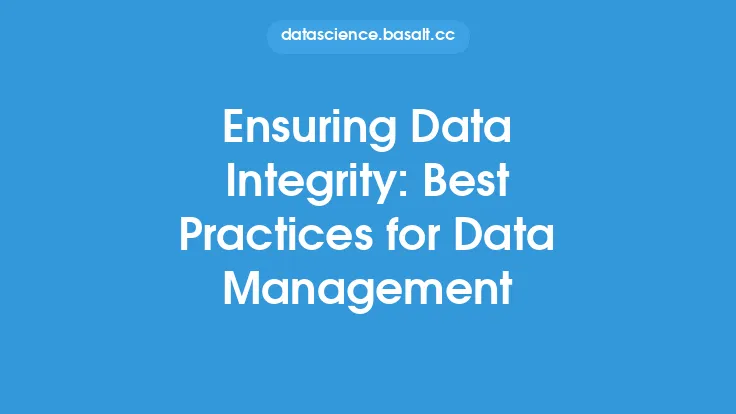Documenting and maintaining a data architecture is a crucial aspect of data engineering, as it ensures that the data systems are well-organized, scalable, and meet the evolving needs of the organization. A well-documented data architecture provides a clear understanding of the data flows, data storage, and data processing, making it easier to maintain, modify, and extend the system. In this article, we will discuss the best practices for documenting and maintaining a data architecture, focusing on the technical and practical aspects of data engineering.
Introduction to Data Architecture Documentation
Data architecture documentation is the process of creating and maintaining a comprehensive set of documents that describe the data systems, including the data sources, data processing, data storage, and data consumption. The documentation should provide a clear understanding of the data architecture, including the technical details, data flows, and data relationships. The goal of data architecture documentation is to provide a single source of truth for the data systems, making it easier for data engineers, data analysts, and other stakeholders to understand and work with the data.
Best Practices for Documenting Data Architecture
Documenting a data architecture requires a structured approach, focusing on the key components of the data systems. The following are some best practices for documenting a data architecture:
- Use a standardized documentation framework: Use a standardized framework, such as the Data Architecture Framework (DAF), to document the data architecture. This framework provides a structured approach to documenting the data systems, including the data sources, data processing, data storage, and data consumption.
- Include technical details: Include technical details, such as data formats, data structures, and data processing algorithms, to provide a clear understanding of the data systems.
- Use data flow diagrams: Use data flow diagrams (DFDs) to illustrate the data flows between different components of the data systems. DFDs provide a visual representation of the data flows, making it easier to understand the data architecture.
- Document data relationships: Document the relationships between different data entities, including the data sources, data processing, and data storage. This includes documenting the data models, data schemas, and data mappings.
- Use version control: Use version control systems, such as Git, to manage different versions of the documentation. This ensures that the documentation is up-to-date and reflects the current state of the data systems.
Maintaining Data Architecture Documentation
Maintaining data architecture documentation is an ongoing process, requiring regular updates and reviews. The following are some best practices for maintaining data architecture documentation:
- Regularly review and update the documentation: Regularly review and update the documentation to ensure that it reflects the current state of the data systems.
- Use automated documentation tools: Use automated documentation tools, such as data cataloging tools, to generate and update the documentation. These tools can automatically generate documentation based on the data systems, reducing the manual effort required to maintain the documentation.
- Involve stakeholders in the documentation process: Involve stakeholders, including data engineers, data analysts, and business users, in the documentation process to ensure that the documentation meets their needs.
- Use collaboration tools: Use collaboration tools, such as wikis and shared document repositories, to facilitate collaboration and communication among stakeholders.
- Establish a documentation governance process: Establish a documentation governance process to ensure that the documentation is accurate, complete, and up-to-date. This includes establishing policies and procedures for creating, reviewing, and updating the documentation.
Technical Considerations for Data Architecture Documentation
Data architecture documentation requires technical considerations, including the use of data modeling tools, data cataloging tools, and data governance tools. The following are some technical considerations for data architecture documentation:
- Data modeling tools: Use data modeling tools, such as Entity-Relationship Diagrams (ERDs), to create data models that describe the data entities and relationships.
- Data cataloging tools: Use data cataloging tools, such as data catalogs and metadata management tools, to generate and manage metadata about the data systems.
- Data governance tools: Use data governance tools, such as data quality tools and data security tools, to ensure that the data systems meet the required standards for data quality and security.
- Data architecture frameworks: Use data architecture frameworks, such as the Zachman Framework and the TOGAF Framework, to provide a structured approach to documenting the data architecture.
- Data visualization tools: Use data visualization tools, such as data flow diagrams and data lineage diagrams, to provide a visual representation of the data flows and data relationships.
Benefits of Documenting and Maintaining Data Architecture
Documenting and maintaining a data architecture provides several benefits, including:
- Improved data quality: Documenting and maintaining a data architecture helps to ensure that the data systems meet the required standards for data quality, including data accuracy, completeness, and consistency.
- Increased data transparency: Documenting and maintaining a data architecture provides a clear understanding of the data flows, data storage, and data processing, making it easier to understand and work with the data.
- Better data governance: Documenting and maintaining a data architecture helps to ensure that the data systems meet the required standards for data governance, including data security, data privacy, and data compliance.
- Improved data collaboration: Documenting and maintaining a data architecture facilitates collaboration and communication among stakeholders, including data engineers, data analysts, and business users.
- Reduced data complexity: Documenting and maintaining a data architecture helps to reduce data complexity, making it easier to understand and work with the data systems.
Conclusion
Documenting and maintaining a data architecture is a critical aspect of data engineering, providing a clear understanding of the data systems and ensuring that they meet the evolving needs of the organization. By following the best practices for documenting and maintaining a data architecture, organizations can ensure that their data systems are well-organized, scalable, and meet the required standards for data quality, data governance, and data security.
